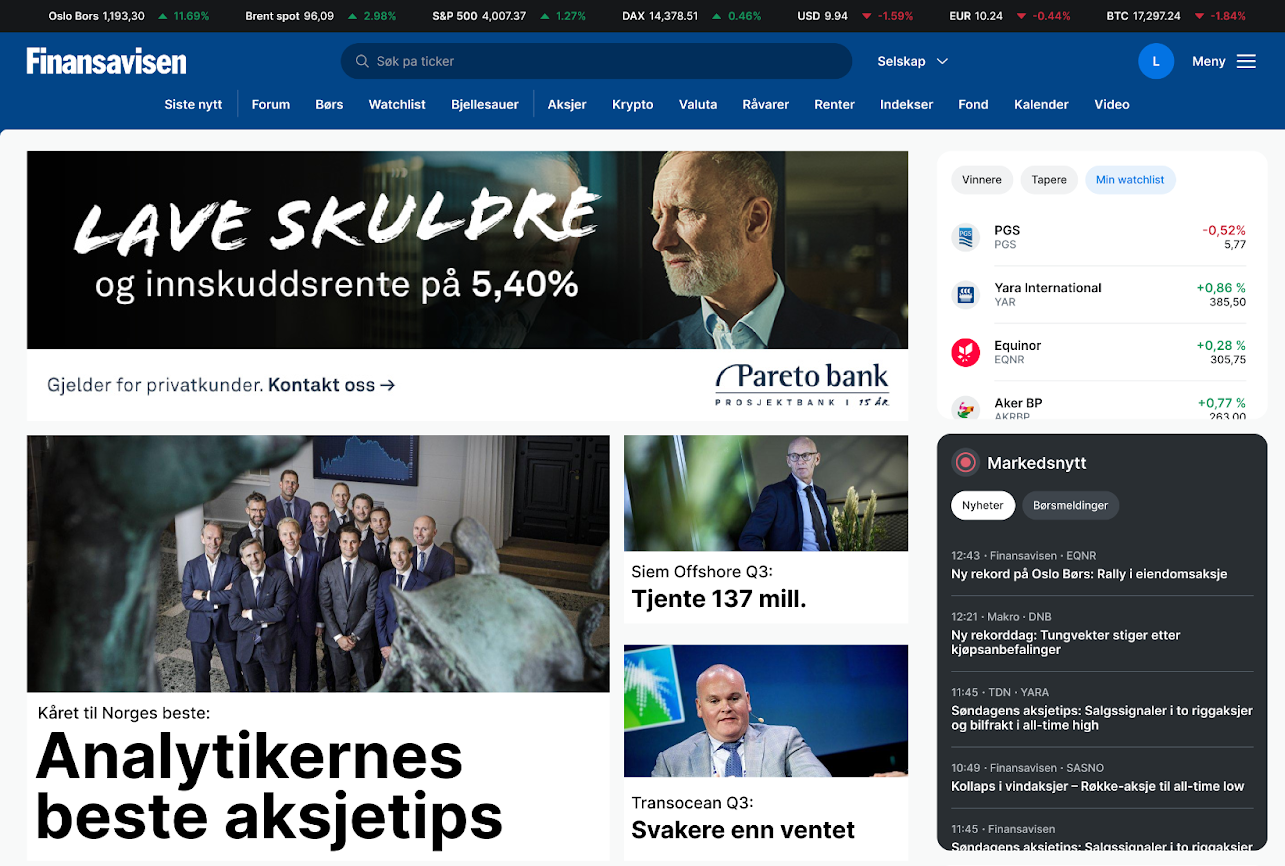
Newsletter
Newsletter
Convention often trumps innovation, but INMA showed how a Norwegian newspaper countered their newsy impulses to build an app popular with younger audiences.
10th February 2023

In the Pugpig weekly media bulletin, Pugpig’s consulting services director Kevin Anderson distills some of the best strategies and tactics that are driving growth in audiences, revenue and innovation at media businesses around the world.
The blank page of innovation can be intimidating especially when you’re competing against massive platforms with armies of developers and even more so if you are under pressure to reinvent your business. Where to start? And how do you deliver something that meets the needs of your users while also meeting your business goals?
Sign up to get the Media Bulletin in your inbox.
That brings me to my X-Files reference and a bit of media history. In 2009, Jack Schafer, who was writing for Slate at the time, wrote a piece about why newspapers had failed to seize the opportunity of the web. “From the beginning, newspapers sought to invent the Web in their own image by repurposing the copy, values, and temperament found in their ink-and-paper editions,” he wrote.
Digital media pioneer Steve Yelvington is one of those few who can claim to have been there at the beginning when media was first transitioning to digital, and he stressed that building digital replicas of newspapers in form, function and organisation was 180 degrees opposite of their goals. “Many of us in the 1993-1995 era loudly declared (mostly to ourselves) that we absolutely, positively were not going to do that,” he said.
But he quickly adds:
And then we did it anyway, because it was who we were. Human mothers don’t give birth to alien babies except on the Sci-Fi channel. It took newcomers to create the real Web.
Steve Yelvington, digital publishing pioneer
Steve and other publishers built an incredible digital publishing platform, Interchange. It was on a pre-internet online service and could credibly be called the first publicly available digital publishing platform in the US. Interchange shipped in January of 1994. You probably have never heard of it because in December of 1993, the New York Times had a front-page story about the web browser Mosaic, which had just been developed at the University of Illinois Champaign-Urbana by Eric Bina and Marc Andreessen: yes, that Marc Andreessen of Netscape and Andreessen-Horowitz. Steve recalls a Scott Kurnit, who at the time was Prodigy’s VP/marketing (Prodigy being a pre-internet online service), saying, “OK open systems beat great closed systems every time.” Interchange is a mostly forgotten footnote in online history, while Andreessen went on to co-found Netscape and then found one of the most consequential venture capital firms in Silicon Valley.
The question that flows from this bit of history: How you can overcome your own conventions to deliver innovation? Fortunately, more and more news and media companies are learning how to deliver innovative solutions for audiences that also achieve the goals of their businesses.
Case in point, INMA has a great example from Norway that demonstrates how a publisher developed and delivered a successful app. Like many publishers, Aftenposten was trying to grow revenue and reach a younger audience, a frequent goal of publishers. To achieve their goals, they used a discovery process to identify an audience need that they could solve. Hilde Maartmann-Moe Sommerstad, senior product manager for Aftenposten/Schibsted said that while they had ideas before this discovery process that it was important to keep their minds open to new ideas. In doing so, the newspaper “changed its natural inclination to build another news product,” according to Sommerstad. They found that their audience in Oslo was keen to get the most out of their city and have a trusted source for what to do and where to eat. This led them to create Vink, a curated city guide. And to differentiate the offering from other similar apps, the guide is not comprehensive but rather intended to be an app that features the best the city has to offer.
The app is meeting their goals both in terms of use and sales, and most importantly, it has received 96% positive reviews from 25-35-year-old users. This has led the team to see the app development not just as a “product innovation (but) also a process innovation,” Sommerstad said. And to spread this process innovation – particularly to demonstrate the importance of discovery – they are involving other departments outside of the product team in user interviews.
User interviews are a useful tool for discovery, and there are a number of frameworks that media companies have used to uncover and understand the needs of their audiences so that they can deliver products that achieve their goals, such as design thinking and the jobs to be done framework. If you want to learn more about them, please get in touch with Pugpig Consulting Services at info@pugpig.com.
The US could join the EU and other countries in forcing Google and Apple to open up their apps stores to greater competition. In a previous edition of the Media Bulletin, we noted that Apple was preparing to allow third-party apps stores and sideloading by 2024 because the iPhone maker was anticipating new laws in the EU. Now, the US Commerce Department has issued a report calling on Congress to pass new laws to encourage competition in the mobile space by removing the “significant hurdles” that app developers face in competing for users.
Legislation was introduced by Democratic Party Senators in 2021 that would have required Google and Apple to allow mobile phone users to be able to download and install apps from outside of the two mobile giants’ app stores. The Commerce Department goes further in its recommendations, also calling on third-party web browsers to be integrated into mobile operating systems, and the department wants Congress to require Google and Apple to be more open and transparent about their standards for approving apps.
The mobile phone makers have said that screening is in the best interest of users and protects their privacy and security, but the Commerce Department says that Congress rather than tech companies should “enact comprehensive federal privacy protections … to provide basic, across-the-board protections,” according to the report.
With a divided Congress, the Biden Administration will have a harder time in getting legislation through Congress, but Republicans have been just as eager to challenge technology companies. Last month, the two parties discussed privacy legislation that would govern social media platforms but remain far apart, which raises questions about if they could bridge those gaps to regulate Apple and Google’s app stores. However, pressure is building globally to increase competition in the mobile app sector. The question will be whether Apple and Google act on a country-by-country basis or decide that it’s easier and less costly to harmonise their business practices globally. Watch this space.
Here are some of the most important headlines about the business of news and publishing as well as strategies and tactics in product management, analytics and audience engagement.

Newsletter

Newsletter

Newsletter

Newsletter

Newsletter